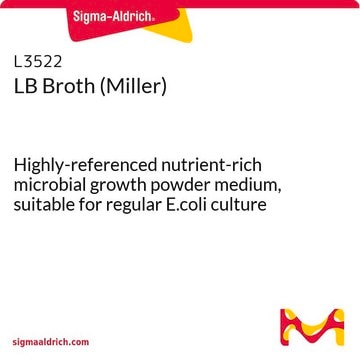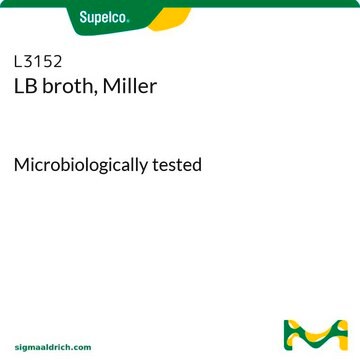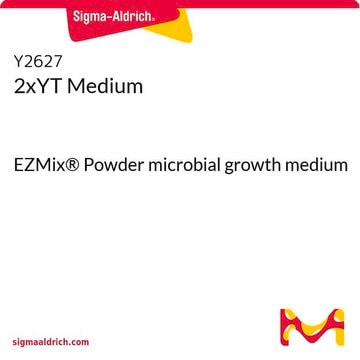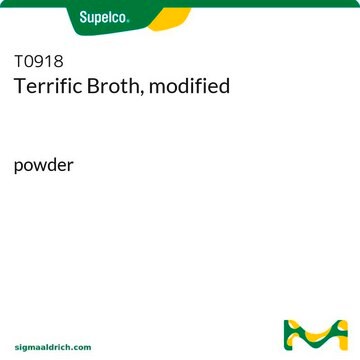L7658
LB Broth (Lennox)
EZMix powder microbial growth medium
Sinónimos:
Lennox broth
About This Item
Productos recomendados
grado
for molecular biology
Nivel de calidad
descripción
quick-dissolve, dust-free formulation
esterilidad
non-sterile
Formulario
powder
técnicas
microbiological culture: suitable
pH
6.8-7.2(2.5% solution)
aplicaciones
agriculture
food and beverages
microbiology
temp. de almacenamiento
room temp
idoneidad
nonselective for Escherichia coli
nonselective for coliforms
Descripción general
Aplicación
Características y beneficios
- Granulated, dust-free format for safer handling and faster mixing
- Convenient small package to eliminate weighing
- Easy scale-up using larger package sizes
- Standard formulation
Componentes
10g/L Tryptone
5 g/L Yeast Extract
5 g/L NaCl
0.6 g/L inert binder (EZMix formulation only)
Nota de preparación
2. Autoclave for 15 minutes at 121 °C.
To prepare Lennox L Broth: Add 1 g glucose and proceed with preparation instructions as above.
To prepare the medium of Enquist and Sternberg: Aseptically add 10 ml of sterile 1M magnesium sulfate after autoclaving.
Reconstitución
Información legal
Producto relacionado
Código de clase de almacenamiento
11 - Combustible Solids
Clase de riesgo para el agua (WGK)
WGK 2
Punto de inflamabilidad (°F)
Not applicable
Punto de inflamabilidad (°C)
Not applicable
Elija entre una de las versiones más recientes:
Certificados de análisis (COA)
¿No ve la versión correcta?
Si necesita una versión concreta, puede buscar un certificado específico por el número de lote.
¿Ya tiene este producto?
Encuentre la documentación para los productos que ha comprado recientemente en la Biblioteca de documentos.
Los clientes también vieron
Protocolos
General protocols for growth of competent cells in microbial medium.
Nuestro equipo de científicos tiene experiencia en todas las áreas de investigación: Ciencias de la vida, Ciencia de los materiales, Síntesis química, Cromatografía, Analítica y muchas otras.
Póngase en contacto con el Servicio técnico















